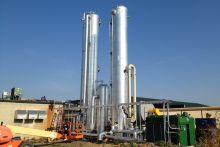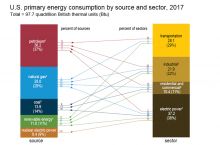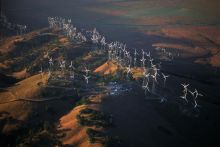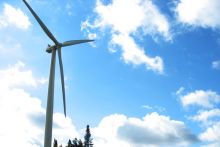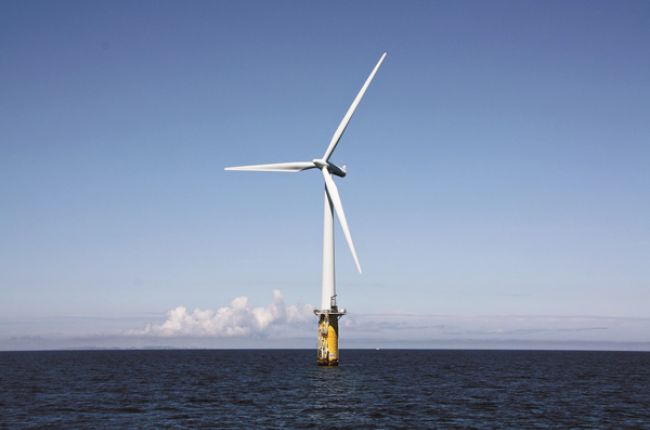
Advantages:
- Offshore wind speeds tend to be faster than on land.1 Small increases in wind speed yield large increases in energy production: a turbine in a 15-mph wind can generate twice as much energy as a turbine in a 12-mph wind. Faster wind speeds offshore mean much more energy can be generated.
- Offshore wind speeds tend to be steadier than on land.1 A steadier supply of wind means a more reliable source of energy.
- Many coastal areas have very high energy needs. Half of the United States’ population lives in coastal areas,1 with concentrations in major coastal cities. Building offshore wind farms in these areas can help to meet those energy needs from nearby sources.
- Offshore wind farms have many of the same advantages as land-based wind farms – they provide renewable energy; they do not consume water; they provide a domestic energy source; they create jobs; and they do not emit environmental pollutants or greenhouse gases.2
Disadvantages:
- Offshore wind farms can be expensive and difficult to build and maintain. In particular:
- It is very hard to build robust and secure wind farms in water deeper than around 200 feet (~60 m), or over half a football field’s length. Although coastal waters off the east coast of the U.S. are relatively shallow, almost all of the potential wind energy resources off the west coast are in waters exceeding this depth.3 Floating wind turbines are beginning to overcome this challenge.
- Wave action, and even very high winds, particularly during heavy storms or hurricanes, can damage wind turbines.1
- The production and installation of power cables under the seafloor to transmit electricity back to land can be very expensive.1
- Effects of offshore wind farms on marine animals and birds are not fully understood.4
- Offshore wind farms built within view of the coastline (up to 26 miles offshore, depending on viewing conditions5) may be unpopular among local residents, and may affect tourism and property values.3
References
1 Offshore Wind Energy Bureau of Ocean Energy Management
2 Advantages and Challenges of Wind Energy U.S. Department of Energy
3 Large-Scale Offshore Wind Power in the United States - Executive Summary (2010) National Renewable Energy Laboratory
4 Environmental Impacts and Siting of Wind Projects U.S. Department of Energy
5 Offshore Wind Turbine Visibility and Visual Impact Threshold Distances Argonne National Laboratory
Learn More:
- Offshore Wind Energy (Website), Bureau of Ocean Energy Management
Website providing a broad overview of offshore wind technology, including history, technology, national resources, current and future U.S. wind power, and environmental considerations.
- Offshore Wind Research and Development (Website), U.S. Department of Energy
Website outlining how the U.S. Department of Energy's Wind Program is working to help develop offshore wind energy in the United States.
- Assessment of Offshore Wind Energy Resources for the United States (Report), National Renewable Energy Laboratory
2010 report on the potential for offshore wind energy development in the United States.
- 2016 Offshore Wind Technologies Market Report (Report), National Renewable Energy Laboratory
2016 report on the status of the U.S. offshore wind industry, including domestic and global market developments, technology trends, and economic data.
- 2017 Offshore Wind Technologies Market Update (Presentation), National Renewable Energy Laboratory
Supplement to NREL's 2016 report on offshore wind technologies providing an update with 2017 data.
- Advances in Earth Science: Offshore Energy (Webinar), American Geosciences Institute
2016 webinar on advances in offshore energy production, technologies, and challenges, including both oil & gas and wind energy.


